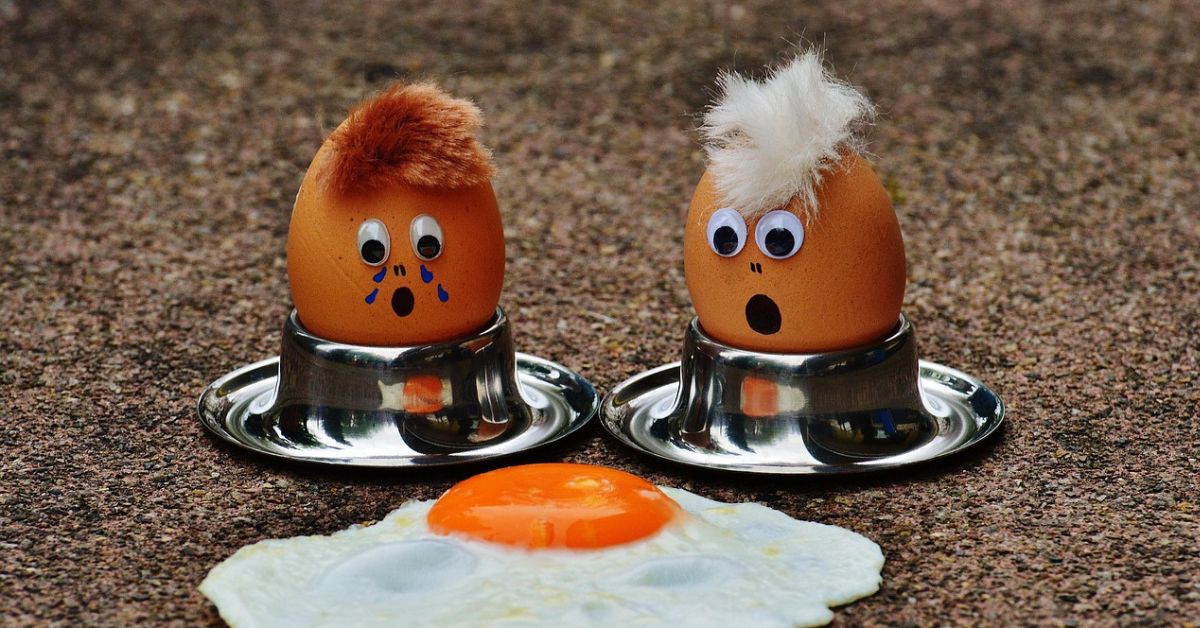You might have noticed the egg cartons looking a bit sparse on the shelves lately, and there’s a good reason for that. We’re currently seeing an egg shortage NSW, and it’s directly linked to outbreaks of avian influenza, commonly known as bird flu. This isn’t just a minor hiccup; it’s had a significant impact on our local poultry farms and, consequently, on what we can buy at the shops. The current situation highlights the delicate balance of our food supply chains.
Understanding the Egg Shortage NSW Amid Avian Influenza Outbreaks
Avian influenza is a nasty virus that can spread rapidly through bird populations. When it hits a commercial farm, especially one that supplies eggs, the consequences are pretty severe. Australia has a strict policy of culling all birds on an infected farm to stop the virus in its tracks. While this is necessary to control the spread, it means a sudden and substantial loss of laying hens.
Here’s a snapshot of Why Is There An Egg Shortage In NSW:
- Outbreaks: Several poultry farms in NSW and other parts of Australia have been affected by different strains of avian influenza.
- Culling: To contain the virus, infected flocks have been euthanised, leading to the loss of millions of birds.
- Supply Impact: This drastic reduction in the number of laying hens directly translates to fewer eggs being produced.
This situation has led to what many are calling an egg shortage Australia-wide, with NSW feeling the pinch. It’s a tough time for farmers who are dealing with the immediate aftermath and the costs associated with these outbreaks, while also trying to rebuild their flocks.
The interconnectedness of farming, disease, and consumer access is starkly evident. What happens on a farm, even miles away, can quickly affect the contents of your shopping basket.
It’s a complex issue, and understanding the role of avian influenza is key to grasping why our egg supplies have been disrupted.
What Is Avian Influenza and Its Impact on Poultry Farms in NSW
Avian influenza, or bird flu, is a nasty viral infection that really hits poultry hard. It’s super contagious and can spread through direct contact with sick birds or even just contaminated environments. Think of it like a really bad cold for chickens, but way more serious.
In Australia, we’ve seen a few different strains pop up. Recently, strains like H7N3 and H7N8 have been found on farms, particularly in Victoria and right here in NSW, especially around the Hawkesbury area. While the really scary H5N1 strain hasn’t been detected here yet, the ones we are seeing are still causing major headaches for our egg producers.
When bird flu hits a farm, the impact is pretty immediate and devastating. The standard procedure here in Australia is a zero-tolerance approach. This means if the virus is detected, all the birds on that farm have to be euthanised to stop it from spreading further. It’s a tough call, but it’s seen as the best way to control the outbreak.
Here’s a look at how it affects things:
- Mass Culling: Farms have to say goodbye to their entire flock, which can be tens of thousands of birds.
- Farm Shutdown: The affected property is quarantined, meaning no birds or products can leave, and no new birds can come in.
- Economic Blow: Farmers face huge financial losses, not just from the lost birds but also from the cost of cleaning and restocking.
The speed at which avian influenza can spread through a flock means that swift action is always needed. This often involves difficult decisions to protect the wider industry.
For example, in Victoria, one outbreak saw over a million birds euthanised. In NSW, a single farm reported 8,000 birds dying from the flu, with a further 240,000 needing to be culled. These aren’t small numbers; they represent a significant chunk of our egg-laying population and directly impact the supply chain. It’s a real challenge for farmers who are often still recovering from previous outbreaks, like the one in 2020-2021. The costs associated with cleaning and restocking can be enormous, and the Emergency Animal Disease Response levy, while helpful, doesn’t always cover the full replacement cost of a new flock.
Extent of the Egg Shortage NSW: How Many Hens Were Lost to Bird Flu
The recent avian influenza outbreaks have really hit the egg industry hard here in NSW and across Australia. When bird flu is detected on a farm, the protocol is pretty strict – all the birds have to be euthanised to stop the spread. It’s a tough situation for everyone involved.
So, how many hens are we talking about? It’s a significant number. Across New South Wales, Victoria, and the ACT, reports indicate that around 2 million chickens have been culled due to the outbreaks. This figure represents a noticeable chunk, roughly 7%, of Australia’s total laying flock, which numbers over 20 million hens.
Here’s a breakdown of the impact:
- NSW Outbreaks: Specific strains of avian influenza, like HPAI H7N8, were found on egg farms in the Hawkesbury region. While initial reports mentioned around 8,000 birds dying directly from the flu, a larger number, around 240,000, were culled as a preventative measure.
- Victorian Impact: South-western Victoria was particularly affected, with multiple farms experiencing outbreaks of H7N3. This led to the euthanasia of over a million birds.
- National Picture: While NSW and Victoria bore the brunt, other states also saw detections, though sometimes with less dangerous strains or on fewer farms.
The loss of these birds directly translates to fewer eggs being produced. The industry is finely tuned, and even a small dip in production can cause noticeable shortages on supermarket shelves. This isn’t just a minor inconvenience; it’s a substantial blow to supply chains that rely on consistent output.
The culling of millions of laying hens, while necessary for disease control, creates a significant gap in the market. Rebuilding these flocks takes time, and the ripple effect is felt all the way to the consumer’s breakfast table.
Biosecurity Measures and Their Role in Controlling Avian Influenza Spread
Keeping avian influenza, or bird flu, out of our commercial poultry farms is a massive job, and it all comes down to biosecurity. Think of it as a farm’s first and last line of defence. When bird flu hits, especially the highly pathogenic kind (HPAI), it can spread like wildfire through flocks, causing huge losses.
So, what are these measures? They’re basically a set of rules and practices designed to stop the virus from getting onto farms in the first place, or at least to limit its spread if it does get in.
- Strict Access Control: This means limiting who and what can enter a farm. Visitors are kept to a minimum, and any necessary vehicles or equipment are thoroughly cleaned and disinfected before coming onto the property. It’s about creating a barrier.
- Wild Bird Deterrence: Since wild birds, especially waterfowl, are often carriers of the virus, farms need strategies to keep them away from poultry. This can involve netting, fencing, or even just managing the farm environment to make it less attractive to wild birds.
- Hygiene Protocols: This covers everything from cleaning and disinfecting sheds and equipment regularly to ensuring staff follow strict personal hygiene rules, like washing hands and changing clothes before entering poultry areas.
- Monitoring and Reporting: Farms are encouraged to keep a close eye on their birds for any signs of illness. If something looks off, it needs to be reported straight away to the authorities so they can act fast.
The effectiveness of these measures is directly linked to how rigorously they are applied by every single farm.
When an outbreak does occur, authorities step in with even more stringent measures. This often includes setting up control zones around infected properties, restricting the movement of birds, eggs, and vehicles in and out of the area. It’s a tough but necessary step to contain the virus and prevent it from jumping to other farms.
The transition towards more free-range farming, while good for animal welfare, presents a significant biosecurity challenge. The increased contact with the outside environment means a higher risk of exposure to wild birds, which are natural carriers of avian influenza strains. Managing this interaction requires constant vigilance and adaptation of biosecurity practices to suit the outdoor setting.
These measures aren’t just about protecting individual farms; they’re about safeguarding the entire poultry industry and, by extension, the egg supply for consumers across NSW and beyond.
Economic Consequences: Rising Egg Prices and Consumer Impact in NSW
It’s no surprise that with fewer eggs around, the prices have started to climb. This bird flu situation has really put a squeeze on things, and you’re probably noticing it at the checkout.
When a significant number of laying hens are lost, like what’s happened in NSW and other parts of Australia, the supply chain feels it straight away. Farmers have fewer eggs to sell, and with demand still pretty steady, especially for a staple like eggs, the cost naturally goes up. It’s basic economics, really – less supply, more demand, higher prices.
Here’s a look at how this plays out:
- Increased Costs for Producers: Farmers face higher costs for feed, labour, and implementing stricter biosecurity measures to prevent further outbreaks. These costs are often passed on.
- Retail Price Hikes: Supermarkets and smaller stores have had to increase the price of eggs to cover their own rising wholesale costs and to manage the limited stock.
- Consumer Budgets Stretched: For many families, eggs are an affordable source of protein. When prices jump, it means people have to spend more on groceries, potentially cutting back on other items.
We’ve seen purchase limits put in place at major supermarkets, which is a clear sign of the supply pressure. While these limits help ensure more people can get at least some eggs, they also highlight the scarcity.
The ripple effect of avian influenza on egg farms means that households are now paying more for a product that was once a budget-friendly staple. This economic shift impacts family budgets and forces a re-evaluation of grocery spending.
It’s a tough situation for everyone involved. Farmers are working hard to rebuild their flocks, and consumers are having to adjust their shopping habits and budgets. Hopefully, things will start to level out as supply recovers, but for now, expect to see those egg prices staying higher than we’re used to.
Supply Chain Disruptions: How the Egg Shortage NSW Affects Retailers and Food Services

The ripple effects of the avian influenza outbreaks are hitting hard across the entire egg supply chain here in NSW. It’s not just about fewer eggs on supermarket shelves; it’s a much bigger headache for everyone involved.
Retailers, from the big supermarkets like Coles and Woolworths to smaller independent grocers, are really feeling the pinch. They’re dealing with empty shelves, which isn’t great for business, and they’ve had to put limits on how many cartons people can buy. This means they’re constantly managing customer frustration and trying to explain why is there an egg shortage in nsw and their usual stock isn’t there. Some stores have even seen their egg sections completely cleared out, leading to a loss of sales and potentially driving customers to look elsewhere.
For food services, the impact is just as significant. Cafes, restaurants, bakeries, and catering companies rely heavily on a consistent supply of eggs for a huge range of dishes. Think about all the breakfasts, cakes, and baked goods that suddenly become harder to make. Some businesses have had to adjust their menus, remove egg-heavy items, or even increase their prices to cope with the higher cost of sourcing eggs. This can affect their profitability and customer satisfaction.
Here’s a look at how different parts of the food service industry are being impacted:
- Cafes and Restaurants: Many are struggling to get enough eggs for popular breakfast items like omelettes, scrambled eggs, and French toast. Some have had to reduce their breakfast service hours or offer alternatives.
- Bakeries: The shortage affects the production of cakes, pastries, and other baked goods that require eggs as a key ingredient. This can lead to delays in production and fewer items available for sale.
- Caterers: Event caterers face challenges in planning menus, especially for events with large numbers of guests. Sourcing enough eggs for functions can become a logistical nightmare.
The disruption isn’t just a temporary inconvenience; it forces businesses to rethink their sourcing strategies and build more resilience into their operations. This might mean looking for alternative suppliers, even if they’re more expensive, or exploring ways to reduce their reliance on eggs where possible.
Here’s a snapshot of the situation:
| Sector | Impact |
| Supermarkets | Empty shelves, purchase limits, customer frustration, lost sales |
| Cafes/Restaurants | Menu adjustments, reduced breakfast service, and increased ingredient costs |
| Bakeries | Production delays, fewer baked goods, and potential price increases |
| Caterers | Menu planning difficulties, sourcing challenges for events |
It’s a tough time for businesses that depend on eggs, and they’re all working hard to adapt to this unexpected shortage.
Government and Industry Responses to Mitigate the Egg Shortage NSW
Crikey, this whole bird flu situation has really put the egg industry in a bind here in NSW. The government and the egg folks themselves have been scrambling to get things back on track, you know? It’s not like they can just magic more hens overnight.
So, what are they actually doing about it? Well, a few things are happening:
- Strict Biosecurity: Farms that haven’t been hit are doubling down on keeping the virus out. This means tighter controls on who and what comes onto the property, like cleaning vehicles and limiting visitors. It’s all about stopping the wild birds from getting too close or bringing anything nasty in.
- Quarantine and Cleaning: For the farms that have been affected, it’s a tough process. They’ve been quarantined to stop the spread, and then there’s the massive job of cleaning and disinfecting everything once the birds are gone. This takes ages and costs a bomb.
- Rebuilding Flocks: This is the big one. Once a farm is cleared, they have to start all over again, buying new chicks and raising them until they’re old enough to lay eggs. This takes months, so it’s not a quick fix.
- Monitoring and Support: The government’s been keeping a close eye on things, doing tests and tracking where the virus might pop up next. They’re also trying to offer some support to the farmers who are doing it tough, though I reckon it’s never quite enough when you’re facing losses like this.
The industry is also working on better ways to track and manage avian influenza outbreaks in the future. This includes looking at how different farming systems, like free-range versus caged, might be more or less vulnerable and what can be done to protect them. It’s a complex puzzle, trying to balance animal welfare with keeping the supply chain running.
Retailers have also stepped in, with major supermarkets putting limits on how many cartons of eggs people can buy at once. This is to stop panic buying and make sure there are eggs available for everyone, even if it means you can’t load up your trolley like you normally might. They’re also working closely with their egg suppliers to get as many eggs as possible onto the shelves, even if it’s not the usual amount.
Consumer Behavior: Adapting to Ongoing Egg Shortage NSW
It’s been a bit of a scramble at the shops lately, hasn’t it? Finding a full carton of eggs on the shelf can feel like a win these days, thanks to the ongoing avian influenza situation impacting our poultry farms. This has meant that many of us are having to rethink our shopping habits and how we use eggs in our daily lives.
The most noticeable change for many has been the introduction of purchase limits at major supermarkets, with most stores restricting customers to two cartons at a time. This is a sensible measure to try and spread the available supply around, but it does mean we can’t just grab a dozen or two without thinking.
So, what are people actually doing about it?
- Rethinking Recipes: We’re seeing a shift towards recipes that use fewer eggs or don’t rely on them at all. Think more baked goods that use egg substitutes or meals that are naturally egg-free.
- Exploring Alternatives: Some folks are looking into other protein sources for breakfast or baking, like tofu scrambles or using flaxseed or chia seeds as binders.
- Mindful Purchasing: There’s a growing awareness about not panic-buying. Most people understand that buying only what you need helps everyone get a fair go.
- Supporting Local: Where possible, people are trying to source eggs directly from local farmers who might not be as affected by the wider supply issues.
The current situation is a good reminder that our food supply chains can be fragile. It encourages us to be more resourceful in the kitchen and to appreciate the products we often take for granted.
It’s not just about buying fewer eggs, either. It’s about being more conscious of waste. Making sure every egg used is put to good use, whether it’s in a fluffy omelette or a batch of cookies, is becoming more important. We’re all learning to be a bit more flexible and creative, which is a good thing in the long run. For those looking for more information on how to manage during these times, educational programs are available to help understand purchasing habits. It’s a collective effort, and by adapting our behaviour, we can all help ease the pressure on the system.
Looking Ahead: Forecasting the Recovery of Egg Supply in NSW Post-Bird Flu
Right, so what’s next for our egg situation here in NSW after all this bird flu drama? It’s not like flipping a switch, unfortunately. Rebuilding a flock takes time, and we’re talking months, not days. The farms that took the biggest hit are busy getting new hens settled in, and that’s a slow process.
We’ve seen about 7% of the national laying flock go down due to the outbreaks, which is a fair chunk. It’s going to take a while for those numbers to get back up to where they were.
Here’s a bit of a breakdown of what needs to happen:
- Flock Replenishment: New chicks need to be raised to laying age. This involves careful management and biosecurity to prevent future outbreaks.
- Biosecurity Reinforcement: Farms are doubling down on measures to keep the virus out, which might mean stricter controls on who and what comes onto the property.
- Market Stabilisation: As supply slowly increases, we should see purchase limits lifted and prices hopefully start to settle down.
The transition to more free-range farming, while good for animal welfare, does present ongoing challenges with biosecurity. Wild birds can carry the virus, and keeping free-range flocks completely isolated is a tough gig. This means we might see these kinds of disruptions pop up more often in the future.
Industry folks are saying we’re looking at a few months for things to really get back to normal. It’s a bit of a waiting game, but the good news is that the eggs currently in supermarkets are safe to eat, and the industry is working hard to get more back on the shelves. We just need to be a bit patient.
Long-Term Implications of the Egg Shortage NSW and the Avian Influenza Outbreaks

The recent avian influenza outbreaks have really shaken things up for egg producers in NSW, and it’s not just about getting eggs back on the shelves quickly. We’re looking at some pretty significant changes down the track.
One of the biggest things is how farms are going to handle biosecurity. With free-range farming becoming more popular, keeping wild birds away from commercial flocks is a massive challenge. This means farms might need to invest a lot more in fencing, netting, and other measures to stop the flu from getting in. It’s a tough balancing act between animal welfare and disease prevention.
Here’s a look at what might change:
- Increased focus on biosecurity: Farms will likely adopt stricter protocols, potentially including more frequent cleaning and monitoring, and maybe even temporary housing for birds during high-risk periods.
- Shift in farming practices: While free-range is popular, the vulnerability to avian flu might push some producers to reconsider or adapt their systems. This could mean more hybrid models or enhanced free-range setups.
- Supply chain resilience: The industry will probably look at diversifying supply sources and building in more buffer stock to handle future disruptions, though this is tricky with a perishable product like eggs.
- Consumer behaviour adjustments: People might get used to seeing fewer eggs, or perhaps more price fluctuations. We could also see a greater acceptance of eggs from different production systems if supply becomes an issue.
The financial strain on farmers is a major concern, as restocking and recovery can take months, impacting their livelihoods significantly.
The industry is finely tuned to meet demand, and even small drops in production can cause noticeable shortages. Rebuilding flocks after an outbreak is a lengthy process, and the costs associated with culling, cleaning, and restocking are substantial for farm owners.
Looking ahead, the industry will need to find ways to balance consumer demand for free-range eggs with the ongoing threat of avian influenza. It’s a complex puzzle, and the solutions won’t be simple or quick. We might see a future where egg prices are a bit higher, but the supply is more stable, thanks to these hard lessons learned.
The recent egg shortage NSW, along with bird flu scares, might have lasting effects. We’re talking about how these events could change things for a long time. Want to know more about what this means for you and the future? Visit our website for the full story and to share your thoughts.
Frequently Asked Questions
What is bird flu, and why is it causing an egg shortage NSW?
Bird flu, or avian influenza, is a sickness that affects birds, especially chickens. When it hits a farm, authorities often have to get rid of all the birds to stop the sickness from spreading. This means fewer chickens are laying eggs, leading to fewer eggs available in shops across NSW.
How many chickens have been affected by bird flu in NSW?
While specific numbers can change, recent outbreaks have led to the culling of millions of chickens across Australia, including in NSW. This significant loss of laying hens directly impacts the number of eggs produced.
Why are eggs more expensive right now?
When there are fewer eggs available because of things like bird flu, but people still want to buy them, prices usually go up. It’s a basic supply and demand situation where the cost increases due to scarcity.
Are eggs still safe to eat if there’s a bird flu outbreak?
Yes, health authorities say that eggs available in supermarkets are safe to eat. The bird flu virus doesn’t usually spread to people through properly cooked eggs. Strict rules are in place to make sure the eggs you buy are safe.
When will we see more eggs back on the shelves in NSW?
It takes time for farms to rebuild their flocks after a bird flu outbreak. Farmers need to raise new chickens, which can take several months. So, while things are improving, it might still be a little while before egg supplies are back to normal.
What are farmers doing to prevent bird flu from affecting their farms?
Farmers are working hard to keep their farms safe by using strict hygiene rules, known as biosecurity. This includes things like cleaning equipment, controlling who comes onto the farm, and trying to stop wild birds from coming into contact with their chickens, especially for free-range farms.









